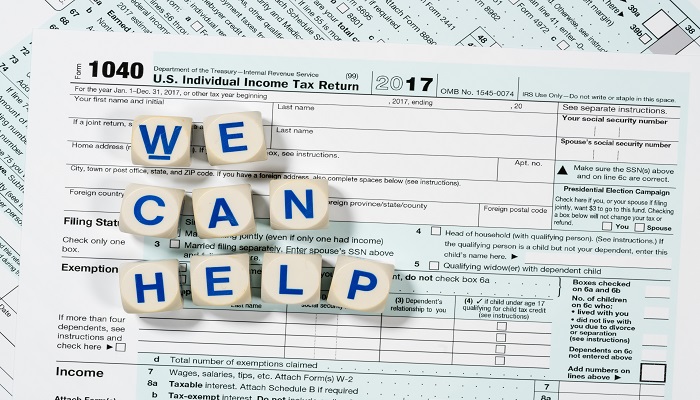
Table of Contents
IRS debt can be a stressful problem to handle for anyone, especially if you are struggling financially. The IRS might have a reputation for being ruthless, but the government agency is not blind to the difficult circumstances taxpayers sometimes face. For this reason, the IRS is open to providing an IRS debt relief and debt forgiveness program for those that genuinely need aid to avoid extreme hardships. One of the available IRS debt relief options is an Offer In Compromise. An OIC involves debt forgiveness, allowing taxpayers to settle their debt by paying a lesser amount than what is owed. To learn more about the IRS Offer in Compromise debt relief option, keep reading!
How Does An Offer In Compromise Work?
An Offer In Compromise is a form of IRS debt relief, in which the taxpayer offers to pay a lesser amount of debt to avoid financial hardship. In order to get your offer accepted, the proposed payment should represent the maximum amount you would be genuinely able to contribute towards your IRS debt without experiencing extreme strain on your finances. After following the entire process and submitting your Offer In Compromise proposal to the IRS, your case will be examined in detail by the agency. Some of the things the agency will pay close attention to include your income, ability to pay, expenses, and other assets.
IRS Offer in Compromise Eligibility and Qualification
It’s best not to answer this question too quickly – not before you talk with your tax professional. Remember, it will be up to you to prove real financial hardship. You must also have all required tax returns filed before OIC status can be granted.
There are some basic requirements you must meet to be considered eligible for this type of IRS debt relief. First and foremost, it is important to keep in mind that it is mandatory to have filed all your tax returns. You are also required to have made the required estimated payments on your tax return. Being in the middle of bankruptcy proceedings is also a disqualifier.
According to the IRS website:
“Beginning with Offer applications received on or after March 27, 2017: The IRS will return any newly filed Offer in Compromise application if you have not filed all required tax returns. Any application fee included with the OIC will also be returned. Any initial payment required with the returned application will be applied to reduce your balance due. This policy does not apply to current year tax returns if there is a valid extension on file.”
To qualify for the OCI, taxpayers are required to prove that there is either ‘doubt as to liability’ , there is an ‘uncollectible status’, or that they are facing financial problems to settle their debt and apply under the (Effective Tax Administration) head.
For more information about your eligibility for an Offer In Compromise, make sure to contact a qualified IRS debt attorney.
Must Read: 7 Useful Guidelines to Qualify for an Offer-In-Compromise
Don’t Let IRS Tax Problems Keep You Up at Night
Speak with an experienced tax attorney and take the first step toward peace of mind.
How Do You Submit An Offer In Compromise?
As every citizen of the U.S. knows, it’s always wise to be well-prepared when dealing with the Internal Revenue Service (IRS). Whether your issue is simply filling your taxes on time or something more involved, like setting up a payment plan for taxes owed, you should always educate yourself as much as possible about the system and how it works. With the tax code being so massive and complex, it can be impossible for the average person to resolve more serious problems with the federal agency on their own. It is always helpful to have an IRS lawyer by your side to get a positive outcome.
Plan on making payments on time, every time, and be sure you file future tax returns properly (and on time). But these aren’t the only IRS offers in compromise tips. Be prepared to work with your specialist to complete a detailed application that will accurately demonstrate financial hardship.
The immediate goal is to show this hardship, so you can be awarded OIC status. An additional, and very important tip: OIC status is temporary, because your income will be under review by the IRS, to make sure you still can’t pay the tax debt.
Of course, there will be several forms involved in the process, another reason for you to seek professional assistance. To submit an Offer In Compromise, you’ll need to meet the following requirements:
- Complete Form 433-A for individuals or 433-B for businesses and provide all required documentation as specified in the forms
- Complete Form 656(s)
- Pay the $205 application fee, which is non-refundable
- Make the initial payment
How Much Should I Offer In Compromise To The IRS?
To make an offer in compromise, you will also need to select a payment plan of your choice from the two available options. The first one involves paying 20% of the proposed amount upfront and then the balance in 5 payments or fewer after the offer is accepted. Alternatively, you can choose to begin paying your OIC in monthly installments after the initial payment, as deliberations around the issue proceed. Once accepted, you simply continue to make payments until you extinguish the debt. To determine how much offer to make to the IRS and to increase your acceptance rate, discuss your case with an experienced tax attorney.
Must Read: 4 Tips to Help Improve Chances of Offer in Compromise Approval
Debunking 5 Myths About The IRS Offer In Compromise Program
Continuing the discussion, this blog post dispels five myths about the IRS “Offer in Compromise Program” to help you understand the provision for tax debt forgiveness. Take a look.
1. Frequent Filing for “Offer in Compromise” is a Good Idea
The IRS has three years to calculate additional tax liabilities or issue a refund and ten years to collect outstanding taxes, if any. The rules or timelines are collectively referred to as the “Statute of Limitations.” Many taxpayers commit the rookie mistake of submitting frequent OICs, as a way of keeping the IRS at bay and settling back taxes as “pennies for dollars.” On the contrary, as an OIC takes more than a year to get reviewed after initial submission, the IRS suspends the 10-year statute of limitations during that period, which essentially means that, delinquent taxpayers can’t get away without paying their taxes in full, unless the OIC is exceptionally reasonable and approved by the IRS.
2. The IRS accepts any amount for the OIC Program
Many taxpayers wrongly believe that they can pull a random number out of thin air and have the IRS readily accept, waving it off their taxes. The IRS has set stringent guidelines to assess whether the amount offered by a taxpayer is good enough to settle their back taxes. This, therefore, means throwing random numbers never works. The IRS requires taxpayers to accurately disclose their financial information through forms such as 433-A and 433-B, followed by projecting their income for upcoming months or years. If a delinquent taxpayer is able to furnish accurate financial information and pass the OIC qualifying guidelines laid by the IRS, only then is there a chance of the OIC being accepted.
3. Proving a Negative Cash Flow is Enough to Qualify for OIC
OICs have a low approval rate to be honest and are generally accepted under two conditions. First, if a taxpayer claims a miscalculation in taxes and actually does not owe the IRS or can prove there are absolutely no means to pay back outstanding taxes. Though many people think that not having enough money in hand to settle outstanding debts qualifies them for an OIC, the IRS has a different approach to such situations. The IRS evaluates a taxpayer’s paying potential after having a good look at their assets and monthly disposable income that only includes “allowable expenses” as per local and national standards. In other words, a person who is living paycheck to paycheck and appears to be drowning under debt can still find their OIC disqualified, if the IRS concludes that the taxpayer has the required potential to clear their tax slate.
4. The IRS accepts “pennies for dollars” under the OIC Program
Though OIC is a legitimate IRS debt forgiveness program, many tax settlement firms misrepresent its clauses to win clients. In fact, many of the firms claim to have “Ex-IRS Officials” on their staff who can persuade the IRS to settle clients’ back taxes, such as pennies for the dollar, which is not the case. Getting OIC approval is always a possibility, but only under special conditions when a taxpayer is unable to settle outstanding taxes, as it may lead to financial hardships or there are insufficient assets that can be used meaningfully to cover the tax liability. The best tax relief you can get in such cases is an extension to pay back taxes. Qualified tax settlement firms are a helpful resource in such instances. If you find a firm claiming to be able to settle your taxes “pennies for dollar” without having a hint about your financials, it’s more likely an IRS Tax debt relief scam. You should avoid falling for false IRS debt help promises.
5. Taxpayers Need Not Pay any Taxes When OIC is Under Review
Some taxpayers believe they can postpone paying current taxes once they submit an “Offer in Compromise” as the ball will be in the IRS’s court. On the contrary, IRS discourages such practices and taxpayers are expected to be current in filing and paying their current taxes, irrespective of any pending OIC. The IRS deals with millions of delinquent taxpayers, and waiting to receive the status of your OIC does not help, as your OIC is more likely to get rejected. An OIC can probably help you extend the due date for outstanding debt, but not negate the inevitable. Taxpayers, therefore, should consult reputable tax settlement firms to learn more about OIC guidelines and assess their chances of being covered under the program.
Every Day Counts: Don’t Let IRS Tax Problems Grow Out of Control
Get strategic guidance to resolve your IRS tax issues efficiently.
Bottom Line
Although making an offer in compromise to settle taxes may seem simple on the surface, the process can involve a lot of intricacies that call for a professional who has many years of experience. If you are looking for the best IRS debt relief option to escape your tax debt problems, IRS tax attorneys at the Law Offices of Nemeth & Flores can help! We take a close look at your circumstances to help you determine eligibility, complete the Offer in Compromise submission process, and chart on the best payment plan. For more information on IRS debt relief services, contact us here or call (972) 426-2991 for a free consultation.


